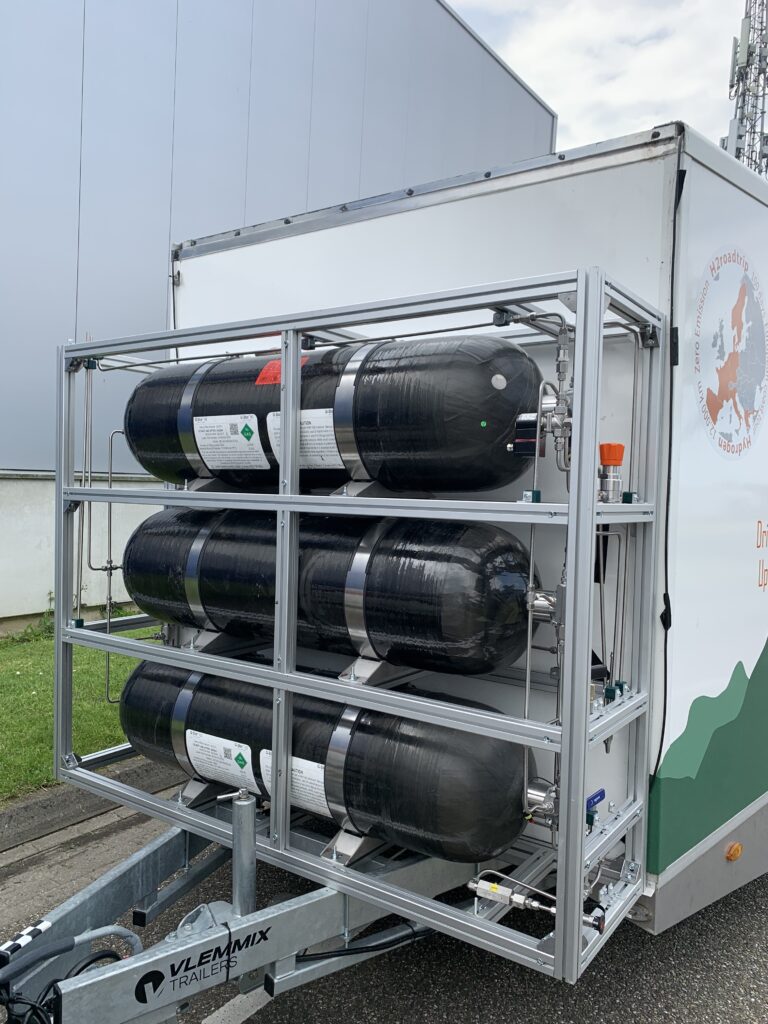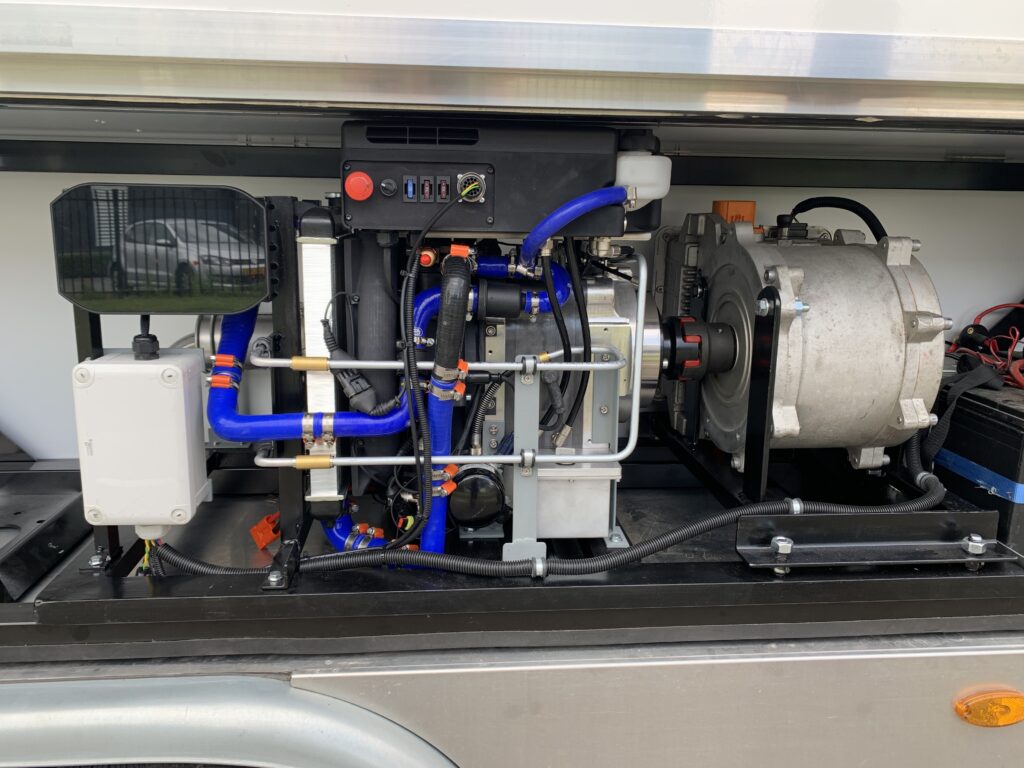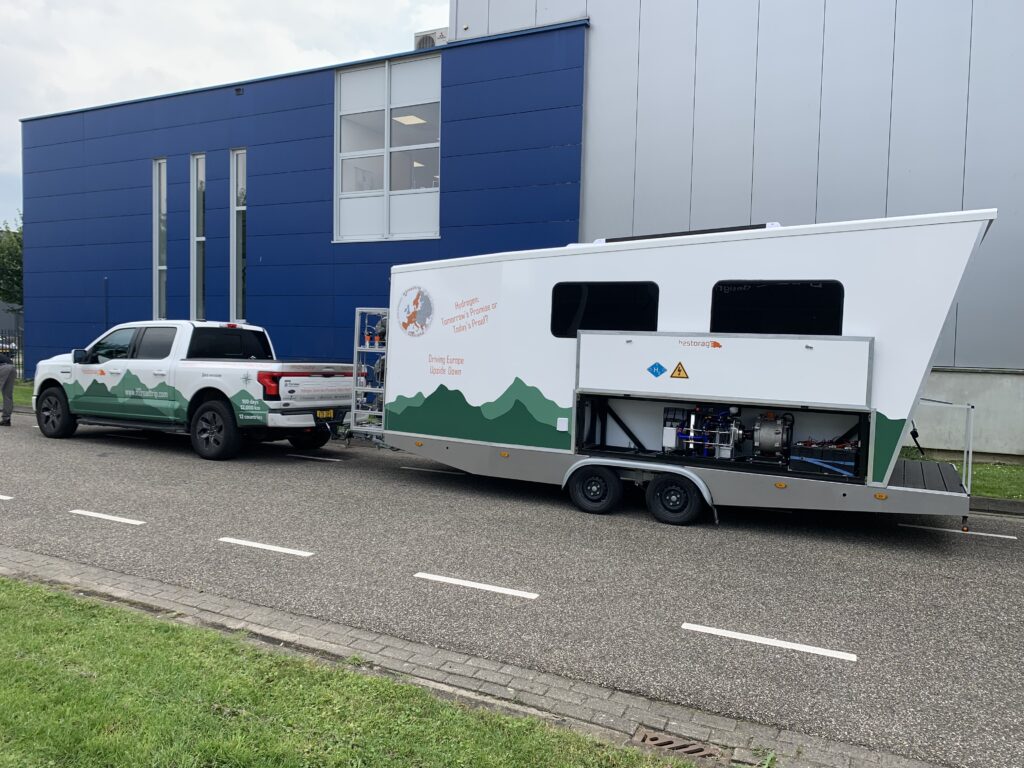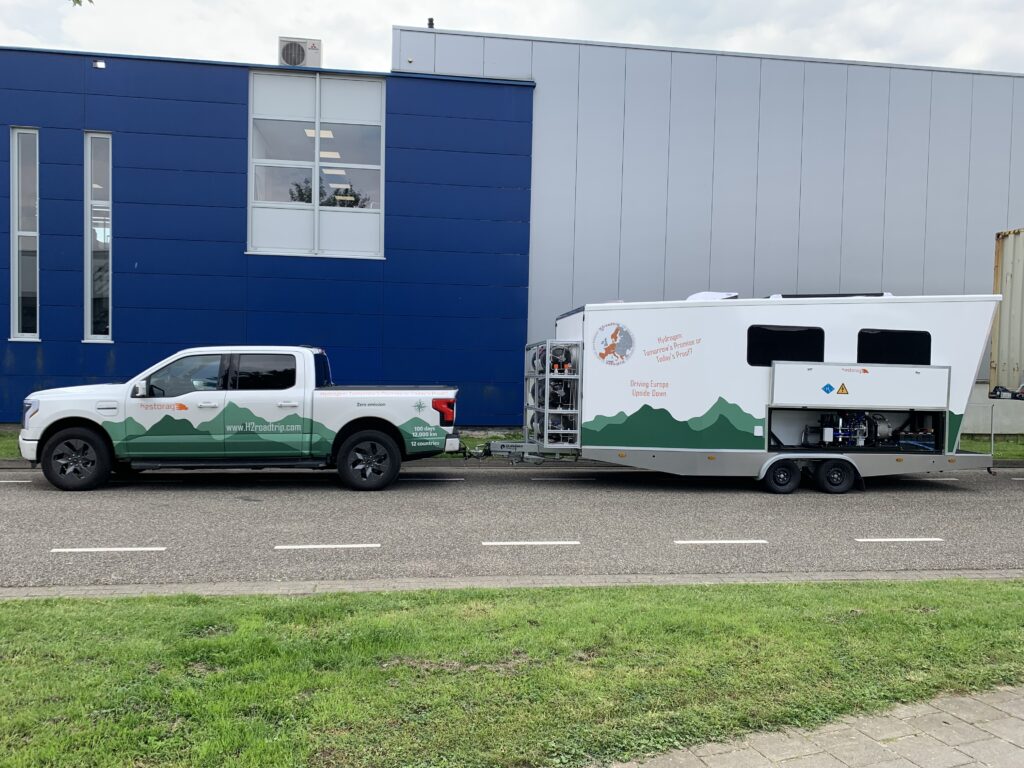European H2roadtrip provided interesting encounters and lots of new knowledge.
André and Els Molengraaf are back in the Netherlands. The couple, who spent more than three months touring Europe with their car and a self-built tiny house, brought hydrogen-powered driving to the attention of the public with their H2RoadTrip. A battery-electric Ford 150 Lightning, which has been modified to feed the batteries with a hydrogen range extender while driving, served as a heavy towing vehicle during the European tour. This gives the combination a range of 1200 km. Ready for an emission-free journey of 104 days through 12 European countries.
Click here for the article.




The standard electric pick-up has a standard towing capacity of 3,500 kg. That is enough to tow the tiny house with range extender. An H2storage Compressed Hydrogen Storage System has been installed in the self-built tiny house. This is connected to an EVS Hydrogen H-450 H2 ICS Wankel Rotary Engine of 25kW. This engine powers a 400 DC e-Generator to charge the Ford batteries directly. The range extender operates at a constant speed with a continuous output of approximately 22 kW. During the journey it became clear that a version with a double disc motor with a capacity of 50 kW is more pleasant to guarantee faster charging.
The trip officially starts in the Norwegian capital Oslo, where representatives of the Institute for Energy Technology were spoken to to exchange hydrogen experiences. At the hydrogen filling station in Gothenburg, Sweden, it is a bit of a shock when the hydrogen there turns out to cost 35 euros per kilo.
Further on in Sweden, the Swedish entrepreneur Hans-Olof Nilsson is introduced. He decided 15 years ago to build a new house that is able to generate its own energy demand all year round. To create a private energy grid, he uses standard solar panels on the roof, in addition to solar panels in the side walls of the house, battery storage, electrolyzers, hydrogen compressors and storage and a fuel cell. Today he is able to produce 2 kg of hydrogen per day for 10 months, more than enough for his house. And now he has decided to buy an H2 car and a new compressor to fill the car himself. He wants to live and drive off the grid.
In Denmark, Everfuel is visited and a look is taken at a hydrogen production location under construction with a capacity of 20 MW.
A few weeks later in Spain, it turns out to be impossible to refuel hydrogen in practice. Stations are closed or unreachable by email and telephone. Or they are located in a closed area. The conclusion is that there is still a lot to be gained here.
In Italy, the traveling hydrogen duo appears on TV and disappointment follows. From Italy, Greece and final destination Turkey are inaccessible, because battery-electric vehicles and hydrogen vehicles have not been accepted on the ferries between Italy and Greece since this spring. That is why they travel via Switzerland, France, Luxembourg and Belgium back to the Netherlands.
In any case, they are not disappointed. “The fact that not everything always goes well is part of innovation and the challenge.”
Want to read more about this trip? Visit www.h2roadtrip.com

